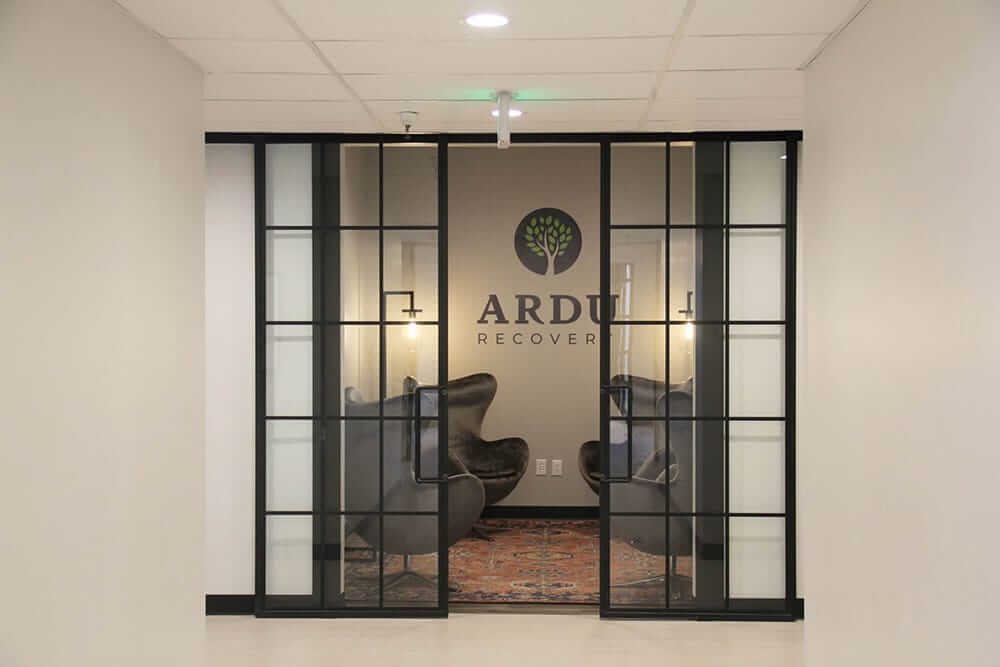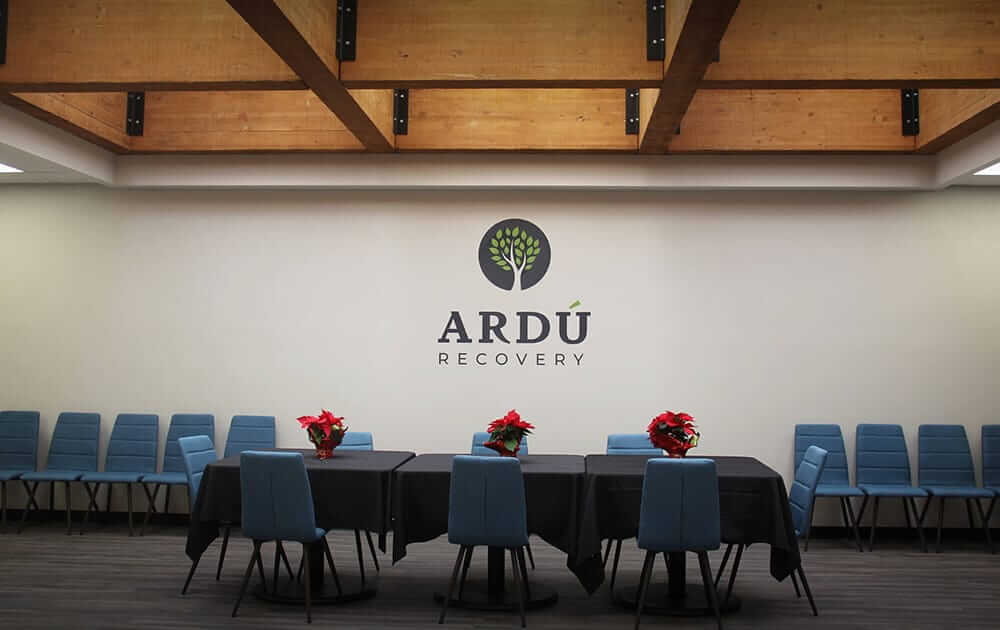Written by Brandon Okey. Mina Draskovic, B.Psy., reviewed this content for accuracy.
Feel-good drugs include antidepressants, stimulants, many recreational drugs, and even certain over-the-counter substances. They boost mood, create euphoria, and enhance feelings of happiness—temporarily.
Despite the immediate pleasures, the downsides of feel-good drugs include misuse, addiction, and serious health issues.
If you’re struggling to quit feel-good drugs or any other substance, Ardu Recovery Center offers the support and care you need to reclaim your life and well-being. Contact our drug addiction treatment center and take the first step toward a healthier, happier future.
Feel-good drugs alter brain chemistry to elevate mood, create euphoria, and provide temporary relief from stress or anxiety. They enhance the activity of certain neurotransmitters responsible for feelings of happiness and pleasure.
Healthcare professionals prescribe prescription medications to treat specific medical conditions, such as depression, anxiety, pain, or sleep disorders. Some of them produce feelings of euphoria or relaxation, which often leads to misuse or addiction if not used as directed.
Feel-good prescription drugs include:
Recreational drugs are primarily used for their pleasurable effects. These drugs create stronger euphoric feelings to provide a temporary escape from reality. Recreational drug use often comes with major risks, such as addiction, legal consequences, and severe health problems.
They include:
Each type of drug works differently, but they all share the common goal of temporarily producing feelings of happiness.
Despite their different mechanisms, all feel-good drugs share a common feature: they manipulate the brain’s reward system. This system is designed to reinforce behaviors essential for survival, such as eating and social interaction, by releasing “feel-good” neurotransmitters. Feel-good drugs hijack this system, artificially boosting neurotransmitter levels to create feelings of pleasure and satisfaction. Over time, repeated use leads to changes in brain function, including tolerance (needing more of the drug to achieve the same effect) and dependence (experiencing withdrawal symptoms without the drug).
Here’s how they work.
Antidepressants increase the levels of neurotransmitters such as serotonin, norepinephrine, and dopamine. These neurotransmitters are associated with mood regulation. Andrade and Rao explain that antidepressant drugs prevent the reuptake of these neurotransmitters, keeping them active in the brain longer. This boosts their effects, correcting the imbalances that contribute to depression.
The effects of antidepressants are gradual, as the brain adapts to the increased availability of these neurotransmitters over time.
Stimulants increase the levels of neurotransmitters that regulate attention, motivation, and pleasure. Research shows that stimulants such as amphetamines and cocaine boost norepinephrine (NE) and dopamine (DA) in the brain, contributing to their feel-good effects.
Stimulant reward is attributable mostly to increased DA in the reward circuitry, although DA stimulation alone cannot explain the rewarding effects of stimulants. The noradrenergic system, which uses NE as the main chemical messenger, serves multiple brain functions including arousal, attention, mood, learning, memory and stress response. (Sofuoglu and Sewell)
By enhancing their activity, users feel a boost in energy, focus, and alertness. The rapid increase in dopamine produces euphoria, which is why these drugs are often used.
If you’re struggling with addiction to amphetamines or cocaine, our rehab center can help you find your path to recovery. Our amphetamine rehab services focus on breaking the cycle of dependency and rebuilding healthy routines, while cocaine treatment services provide tailored therapies to manage cravings and address the underlying causes of addiction.
Benzodiazepines enhance GABA, the brain’s natural calming neurotransmitter. This makes users feel deeply relaxed, lowering anxiety, boosting mood, and improving sleep. According to a 2024 study, benzodiazepines work by:
Creado and Plante postulate that some sedatives activate melatonin receptors to promote sleep by mimicking the body’s natural sleep hormone. While effective for treating anxiety and insomnia, their strong impact on the brain makes them addictive, leading to dependence and withdrawal if not carefully managed.
Many people struggle with benzodiazepine addiction and show signs of physical and emotional dependency on Xanax or Valium. Our specialized benzodiazepine detox services provide a medically supervised and compassionate approach to safely manage withdrawal.
Whatever type of feel-good sedatives you’re hooked on, our detox program can guide you through a safe and effective recovery process.
Opioids bind to opioid receptors in the brain regions responsible for pain perception and reward. When these receptors are activated, opioids reduce the perception of pain while triggering the release of large amounts of dopamine in the brain’s reward pathways. Dopamine surge leads to intense feelings of euphoria and pleasure, which is why opioids are highly effective as painkillers.
In a 2020 study, researchers explain that opioids primarily bind to the mu receptor, which is responsible for pain relief and euphoria by reducing neuronal excitability and neurotransmitter release. The euphoric effects of opioids reinforce drug-taking behavior and cause addiction.
If you or someone you love are struggling with this kind of addiction, Ardu’s opioid rehab center offers comprehensive treatment and support to help you reclaim your life.
Recreational drugs such as MDMA, marijuana, and heroin alter brain chemistry to produce pleasurable effects.
These drugs exploit the brain’s reward system, enhancing mood and contributing to addiction and misuse. Don’t let them control your life any longer.
Contact Ardu and take the first step toward lasting recovery. Our expert team is committed to your well-being every step of the way.
Many people turn to feel-good drugs as a way to cope with life’s challenges, seeking temporary relief or escape. Whether it’s to ease stress, numb emotional pain, or simply out of curiosity, these substances offer a quick fix that can be hard to resist.
People may turn to feel-good drugs for a variety of reasons, but the end result is often the same: abuse and dependence. What begins as a way to cope or find temporary happiness leads to a dangerous cycle that’s hard to break.
The signs of drug addiction are numerous. No matter what drug a person is addicted to, they will display similar behavioral patterns. Here’s how you can recognize a person’s dependence on drugs:
If you recognize these signs in yourself or someone you care about, don’t wait to get help; early intervention can prevent a world of pain and make recovery much easier.
Addiction to multiple drugs simultaneously is called polysubstance abuse. Many people develop a dependence on two or more substances, seeking different effects or using one drug to counteract the effects of another. Common combinations include mixing stimulants with depressants, such as cocaine and alcohol, or opioids with benzodiazepines.
Polysubstance addiction is particularly dangerous because it increases the risk of overdose, unpredictable drug interactions, and severe health complications. It also complicates the treatment process, as withdrawal symptoms and cravings can be more intense and complex.
Ardu Recovery Center provides comprehensive, personalized treatment programs to address polysubstance addiction and its complex challenges. Our expert team understands the intricacies of multiple drug dependencies and offers support to help you overcome them simultaneously.
With Ardu, you’ll receive compassionate care, evidence-based therapies, and ongoing support to reclaim your life from the grip of multiple addictions and build a healthier, substance-free future.








Our team of addiction experts understands the complex effects of drugs on brain chemicals and body chemistry. Our rehab center offers a comprehensive treatment plan to address substance use disorders and the risks associated with all kinds of drugs and alcohol.
Our evidence-based therapies are tailored to your unique situation:
Our expert team guides you through every step, from initial detox to long-term aftercare planning. We help you understand how different psychoactive drugs affect your brain and body, and provide tools to manage cravings and prevent relapse.
Each person’s journey with feel-good drugs is unique. Our personalized approach ensures you receive the specific support you need to overcome addiction and build a foundation for lasting recovery. Located in the serene natural setting of Provo, Utah, our facility provides the ideal environment for healing and growth.
Don’t let the pursuit of artificial happiness control your life. Reach out to Ardu Recovery Center today and take the first step towards a healthier, substance-free future.

Brandon Okey is the co-founder of Ardu Recovery Center and is dedicated to empowering people on their journey to sobriety.
Happiness drugs, often referred to as mood-boosting or mood-altering drugs, include many different types of substances that affect body chemistry and brain cells to produce feelings of euphoria or relaxation. These can include both legal drugs such as antidepressants and anti-anxiety medications, as well as illegal drugs. Some common types of happiness drugs include stimulants, opioids, and psychedelic substances.
While they may offer temporary feelings of well-being, people aren’t always aware of the health risks and long-term negative effects. Mental health professionals warn that relying on these drugs for emotional health often lead to substance use disorders and negative side effects.
Many types of drugs can trigger the release of dopamine in the brain.
The impact on dopamine is influenced by individual factors of each person and their specific drug of choice.
Teens may turn to drugs for different reasons.
Parents, educators, and mental health professionals need to address these underlying issues and provide support and education about the potential risks and long-term effects of drug use.
Xanax is an anti-anxiety medication that enhances the effects of GABA, a neurotransmitter that reduces brain activity. It’s primarily prescribed for panic attacks, anxiety disorders, and sometimes for insomnia. Xanax can produce feelings of relaxation, calmness, and drowsiness.
While it can effectively reduce symptoms such as rapid heart rate and panic in the short term, it also carries risks. Potential side effects include dizziness, confusion, and impaired coordination. Long-term use can lead to tolerance, dependency, and cognitive impairment. Xanax can be particularly dangerous when combined with alcohol or opioids, increasing the risk of overdose.
Because of its potential for abuse and addiction, only use Xanax under close medical supervision.
Prozac is a popular antidepressant that boosts levels of serotonin in the brain. Unlike some mood-altering drugs that produce immediate effects, Prozac typically takes several weeks to reach its full therapeutic potential. When effective, it can alleviate symptoms of depression, reducing feelings of sadness, anxiety, and hopelessness. Many users report improved mood, increased energy levels, and better sleep patterns.
The experience is unique to each person. Some may feel emotionally “dulled” or experience side effects such as dry mouth, nausea, or changes in sex drive. Prozac isn’t a “happy pill” and doesn’t create artificial euphoria. Instead, it aims to restore emotional balance, allowing you to better manage your mental health conditions under professional guidance.
There’s no single “best” happy pill as individual factors affect drug efficacy. Mood-altering drugs, including antidepressants and anti-anxiety medications, work differently for each person. Some may find relief with SSRIs like Prozac or Lexapro, while others might respond better to SNRIs or other types of antidepressants.
Consult a health care provider or mental health professional to determine the most appropriate medication based on your specific symptoms, medical history, and potential side effects. Remember, these medications are designed to manage mental health issues, not create artificial happiness. A comprehensive treatment plan often includes therapy, lifestyle changes, and possibly medication under medical supervision.
The term “happy pills” refers to different mood-altering drugs, both legal and illegal. Many antidepressants and anti-anxiety medications are legal with a prescription from a health care provider. These include SSRIs, SNRIs, and benzodiazepines used for medical purposes. Some drugs that produce euphoria or alter mood, such as MDMA (ecstasy) or certain synthetic drugs, are illegal. But even legal prescription medications can be illegal if used without a valid prescription or in ways not intended by medical professionals.
Fast-acting happy pills refer to medications that quickly impact mood or anxiety. Benzodiazepines such as Xanax work rapidly to reduce anxiety and induce feelings of relaxation, but carry risks of dependency. Some newer antidepressants, such as Ketamine, show promise for fast-acting relief from depression. Stimulants used for attention deficit hyperactivity disorder (ADHD) can provide quick boosts in mood and energy.
Fast-acting doesn’t always mean better or safer. These medications often have more potential risks and side effects than slower-acting options. The release of dopamine from these drugs can lead to addiction. Always consult a health care provider before using any mood-altering substances.
Antidepressants can increase energy levels, but their effects depend on individual factors and the type of antidepressant. SSRIs and SNRIs balance brain chemicals such as serotonin and norepinephrine. This can lead to improved mood and, for some, increased energy. Their primary goal is to alleviate depression symptoms, which often include fatigue and lack of motivation.
Some people might experience increased energy as their depression lifts. Others might feel more energetic because of improved sleep quality. Some antidepressants can even cause drowsiness as a side effect. If you’re concerned about energy levels, discuss this with your health care provider or mental health professional.
Lexapro (escitalopram) is not a “happy pill” because it doesn’t create artificial happiness. It’s an SSRI antidepressant prescribed for depression and anxiety disorders. Lexapro works by increasing serotonin levels in the brain to regulate mood. While it may improve symptoms of depression and anxiety, leading to a more stable mood and potentially more positive outlook, it doesn’t induce euphoria or instant happiness.
Like all antidepressants, Lexapro carries potential risks and side effects. It should only be taken under the guidance of a health care provider as part of a comprehensive treatment plan for mental health issues.
Hunt, G., & Evans, K. (2008). “The Great Unmentionable”: Exploring the Pleasures and Benefits of Ecstasy from the Perspectives of Drug Users. Drugs (Abingdon, England), 15(4), 329. https://doi.org/10.1080/09687630701726841
Andrade, C., & Kumar Rao, N. S. (2010). How antidepressant drugs act: A primer on neuroplasticity as the eventual mediator of antidepressant efficacy. Indian Journal of Psychiatry, 52(4), 378-386. https://doi.org/10.4103/0019-5545.74318
Rothman RB, Baumann MH, Dersch CM, Romero DV, Rice KC, Carroll FI, Partilla JS. Amphetamine-type central nervous system stimulants release norepinephrine more potently than they release dopamine and serotonin. Synapse. 2001 Jan;39(1):32-41. doi: 10.1002/1098-2396(20010101)39:1<32::AID-SYN5>3.0.CO;2-3. PMID: 11071707.
Sofuoglu M, Sewell RA. Norepinephrine and stimulant addiction. Addict Biol. 2009 Apr;14(2):119-29. doi: 10.1111/j.1369-1600.2008.00138.x. Epub 2008 Sep 22. PMID: 18811678; PMCID: PMC2657197.
Chang, Y., Xie, X., Liu, Y., Liu, M., & Zhang, H. (2024). Exploring clinical applications and long-term effectiveness of benzodiazepines: An integrated perspective on mechanisms, imaging, and personalized medicine. Biomedicine & Pharmacotherapy, 173, 116329. https://doi.org/10.1016/j.biopha.2024.116329
Creado, S., & Plante, D. T. (2016). An update on the use of sedative-hypnotic medications in psychiatric disorders. Current Psychiatry Reports, 18(9), 78. https://doi.org/10.1007/s11920-016-0717-y
Rosoff, D. B., Smith, G. D., & Lohoff, F. W. (2021). Prescription Opioid Use and Risk for Major Depressive Disorder and Anxiety and Stress-Related Disorders. JAMA Psychiatry, 78(2), 151. https://doi.org/10.1001/jamapsychiatry.2020.3554
Why is sugar thought of as a drug?
What type of drugs cause kidney damage?
Why does drug abuse lead to strokes?
What is alcohol withdrawal syndrome?
Alcohol abuse vs alcohol addiction